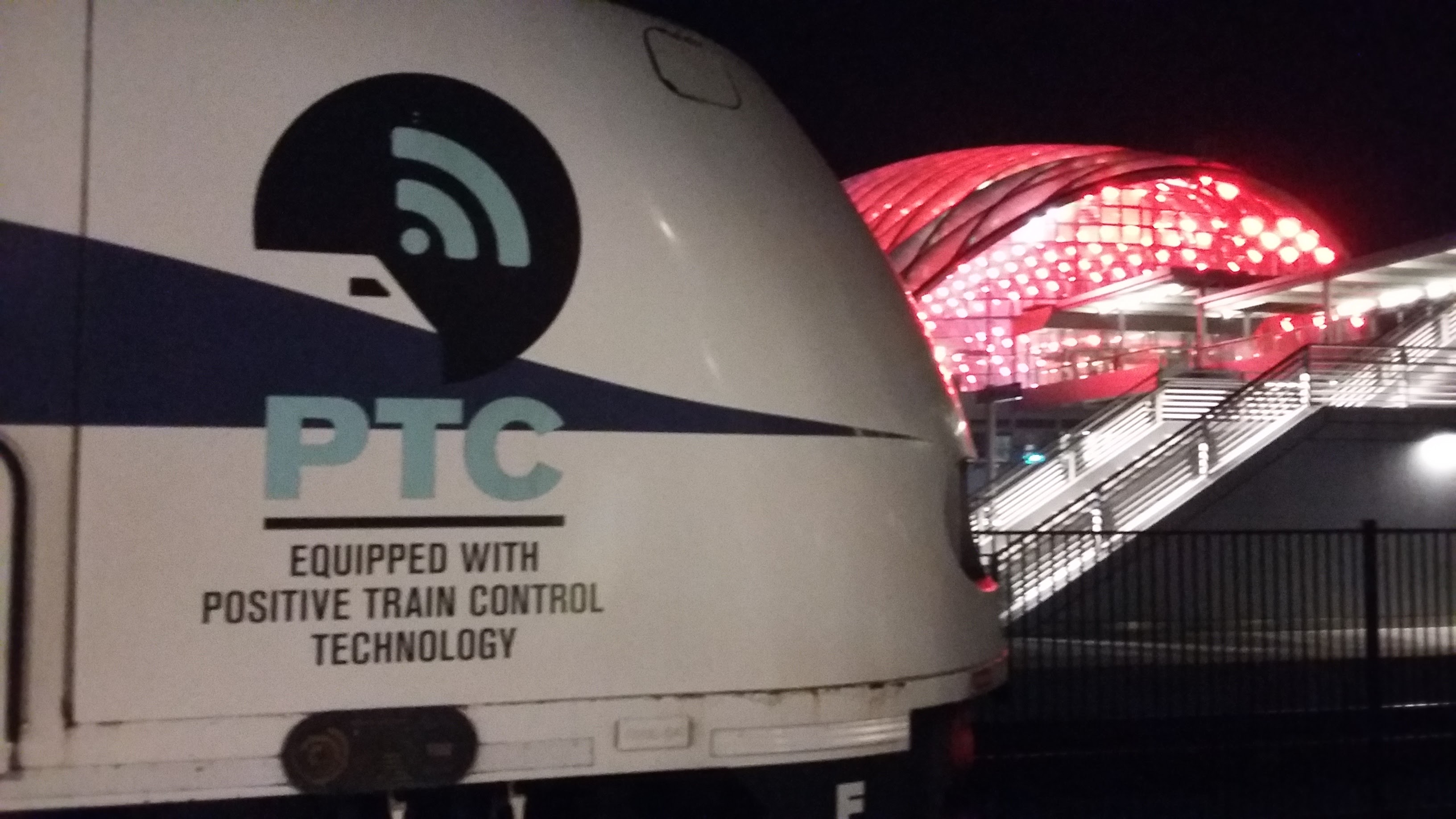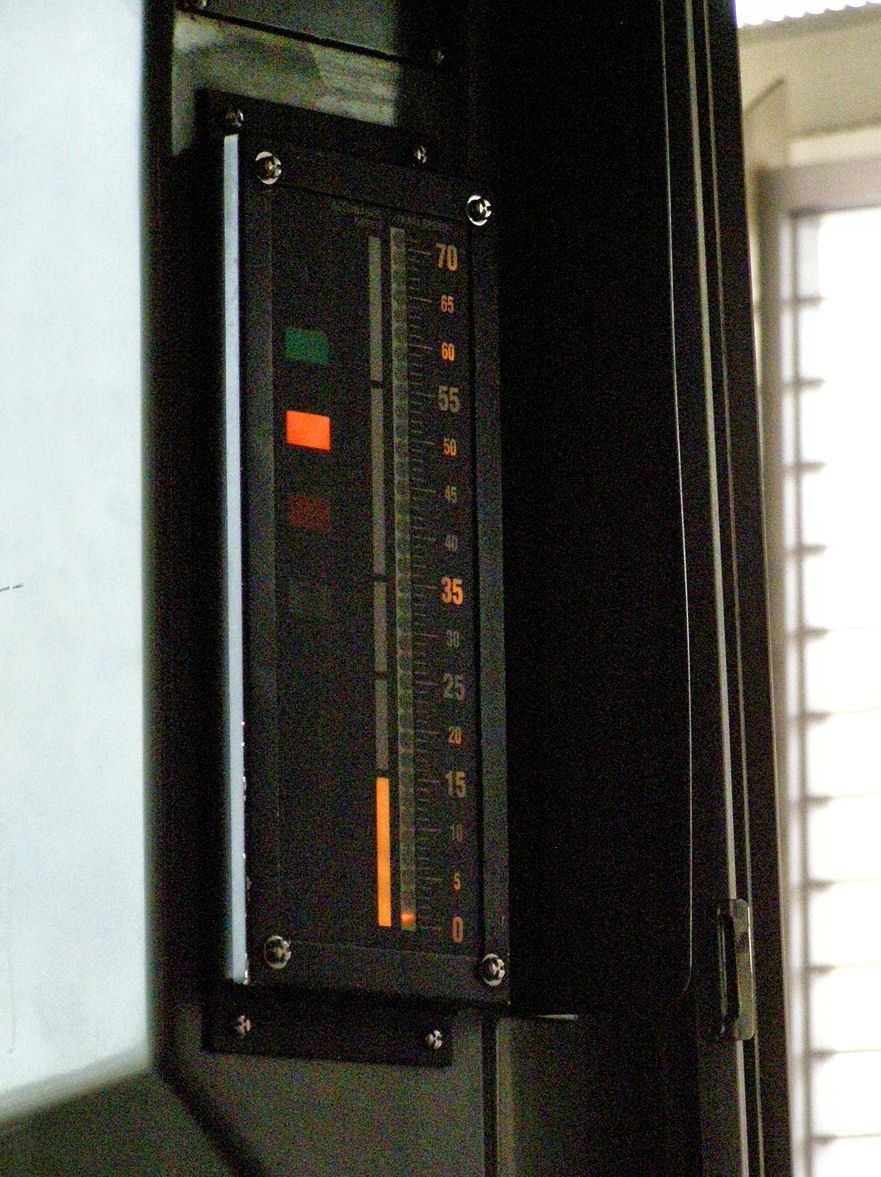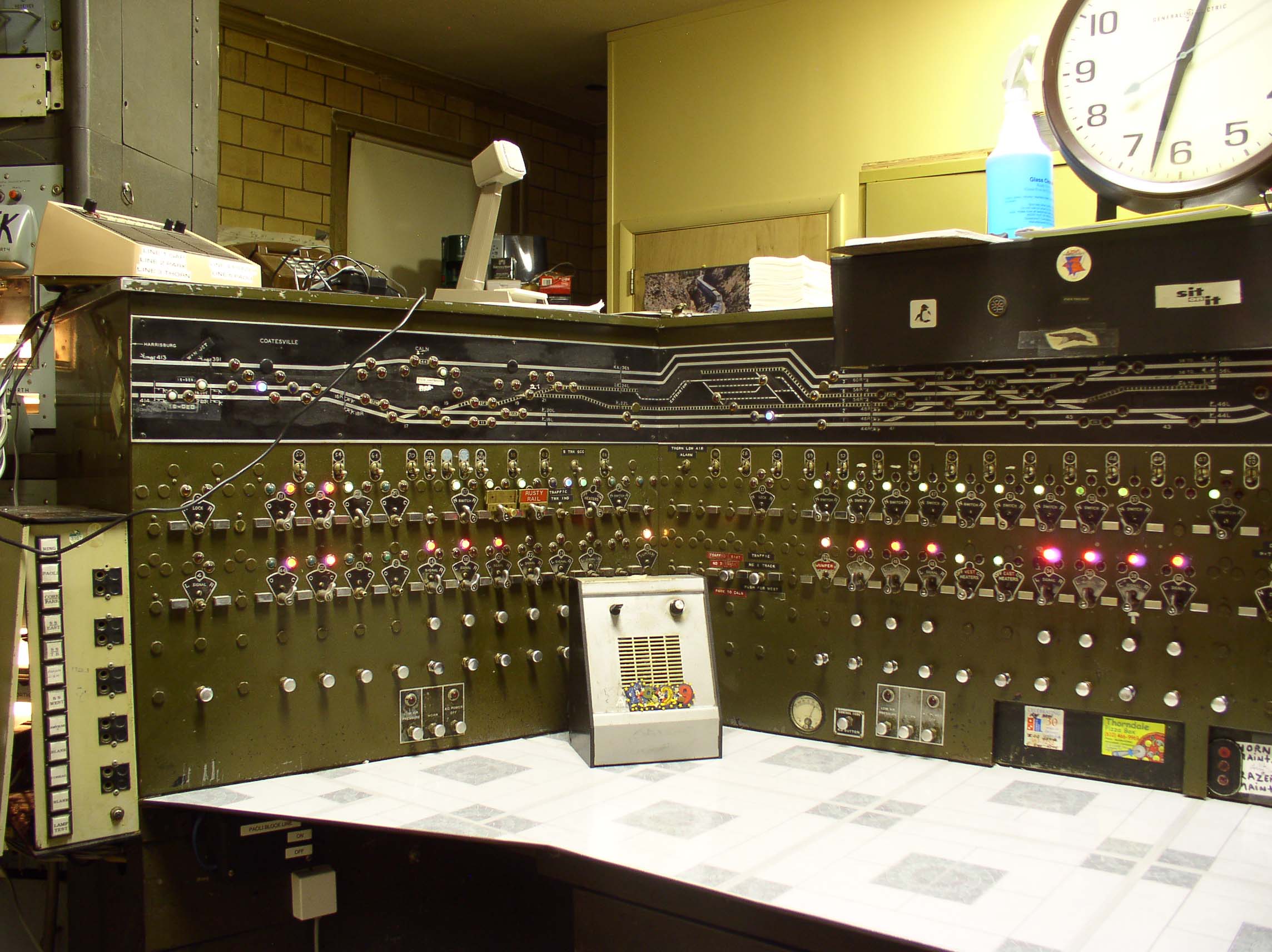|
General Code Of Operating Rules
The General Code of Operating Rules (GCOR) is a set of operating rules for railroads in the United States. The GCOR is used by Class I railroads west of Chicago, most of the Class II railroads, and many Short-line railroads. Some railroads in northeast United States follow NORAC, while Canada and Mexico have their own set of operating rules that govern their railroad operations. Overview The GCOR rules are intended to enhance railroad safety. The rules cover employee responsibilities, signaling equipment, procedures for safe train movement, dealing with accidents and other topics that directly and indirectly affect railroad safety. Some railroads modify the GCOR rules to suit their specific operations. The GCOR is supplemented by System Special Instructions, Timetables, Hazardous Materials Instructions, Air Brake and Train Handling Instructions, and General Orders. These documents are issued by each individual railroad. System Special instructions, Timetables, and General Order ... [...More Info...] [...Related Items...] OR: [Wikipedia] [Google] [Baidu] |
United States
The United States of America (U.S.A. or USA), commonly known as the United States (U.S. or US) or America, is a country primarily located in North America. It consists of 50 states, a federal district, five major unincorporated territories, nine Minor Outlying Islands, and 326 Indian reservations. The United States is also in free association with three Pacific Island sovereign states: the Federated States of Micronesia, the Marshall Islands, and the Republic of Palau. It is the world's third-largest country by both land and total area. It shares land borders with Canada to its north and with Mexico to its south and has maritime borders with the Bahamas, Cuba, Russia, and other nations. With a population of over 333 million, it is the most populous country in the Americas and the third most populous in the world. The national capital of the United States is Washington, D.C. and its most populous city and principal financial center is New York City. Paleo-Americ ... [...More Info...] [...Related Items...] OR: [Wikipedia] [Google] [Baidu] |
Shunt (railway Operations)
Shunting, in railway operations, is the process of sorting items of rolling stock into complete trains, or the reverse. In the United States this activity is known as switching. Motive power Motive power is normally provided by a locomotive known as a ''shunter'' (in the UK) or switcher (in the US). Most shunter/switchers are now diesel-powered but steam and even electric locomotives have been used. Where locomotives could not be used (e.g. because of weight restrictions) shunting operations have in the past been effected by horses or capstans. Hazards Coupling The terms "shunter" and "switcher" are applied not only to locomotives but to employees engaged on the ground with shunting/switching operations. The task of such personnel is particularly dangerous because not only is there the risk of being run over, but on some railway systems—particularly ones that use buffer-and-chain/screw coupling systems—the shunters have to get between the wagons/carriages in order to ... [...More Info...] [...Related Items...] OR: [Wikipedia] [Google] [Baidu] |
Railway Signaling In The United States
Rail transport (also known as train transport) is a means of transport that transfers passengers and goods on wheeled vehicles running on rails, which are incorporated in tracks. In contrast to road transport, where the vehicles run on a prepared flat surface, rail vehicles (rolling stock) are directionally guided by the tracks on which they run. Tracks usually consist of steel rails, installed on sleepers (ties) set in ballast, on which the rolling stock, usually fitted with metal wheels, moves. Other variations are also possible, such as "slab track", in which the rails are fastened to a concrete foundation resting on a prepared subsurface. Rolling stock in a rail transport system generally encounters lower frictional resistance than rubber-tyred road vehicles, so passenger and freight cars (carriages and wagons) can be coupled into longer trains. The operation is carried out by a railway company, providing transport between train stations or freight customer facilit ... [...More Info...] [...Related Items...] OR: [Wikipedia] [Google] [Baidu] |
Canadian Rail Operating Rules
The Canadian Rail Operating Rules is a set of operating rules for railways in Canada. It is used by every Canadian railway. Overview The Canadian Rail Operating Rules are intended to enhance railway safety. The rules cover employee responsibilities, signalling equipment, procedures for safe train movement, dealing with accidents and other topics that directly and indirectly affect railway safety. Categories The full set of Canadian Rail Operating Rules is divided into 22 categories: #General Responsibilities #General Notice #General Rule #Definitions #Operating Rules #Time and Time Tables (Rules 1–6) #Signals – General (Rules 11–35) #Protection of Impassable or Slow Track (Rules 40–49) #Movement of Trains and Engines (Rules 51–116) #Radio (Rules 117–127) #General Procedures (Rules 131–148) #General Bulletin Order (GBO) (Rules 151–155) #Forms of GBO #Occupancy Control System (OCS) Rules (Rules 301–313) #Special Control System (SCS) Rules (Rules 351–353) #Genera ... [...More Info...] [...Related Items...] OR: [Wikipedia] [Google] [Baidu] |
Positive Train Control
Positive train control (PTC) is a family of automatic train protection systems deployed in the United States. Most of the United States' national rail network mileage has a form of PTC. These systems are generally designed to check that trains are moving safely and to stop them when they are not. A simplistic form of train traffic governance is ''negative'' train control, where trains must stop when issued a stop order and can move in the absence of such. An example of negative train control is Indusi. In contrast, ''positive'' train control restricts the train movement to an explicit allowance; movement is halted upon invalidation. A train operating under PTC receives a ''movement authority'' containing information about its location and where it is allowed to safely travel. As of 2019, the U.S. freight rail industry trade organization AAR claimed that the nation's largest freight railroads were operating PTC across 83.2 percent of the required route miles. The American Railwa ... [...More Info...] [...Related Items...] OR: [Wikipedia] [Google] [Baidu] |
Automatic Train Control
Automatic train control (ATC) is a general class of train protection systems for railways that involves a speed control mechanism in response to external inputs. For example, a system could effect an emergency brake application if the driver does not react to a signal at danger. ATC systems tend to integrate various cab signalling technologies and they use more granular deceleration patterns in lieu of the rigid stops encountered with the older automatic train stop (ATS) technology. ATC can also be used with automatic train operation (ATO) and is usually considered to be the safety-critical part of a railway system. Over time, there have been many different safety systems labelled as "automatic train control". The first experimental apparatus was installed on the Henley branch line in January 1906 by the Great Western Railway, although it would now be referred to as an automatic warning system (AWS) because the driver retained full command of braking. The term is especially co ... [...More Info...] [...Related Items...] OR: [Wikipedia] [Google] [Baidu] |
Direct Traffic Control
Direct traffic control (DTC) is a system for authorizing track occupancy used on some railroads instead of or in addition to signals. It is known as "direct" traffic control because the train dispatcher gives track authority directly to the train crew via radio, as opposed to through wayside personnel via telephone or telegraph, as in train orders. Layout In DTC, controlled tracks and sidings (those requiring authority from the train dispatcher to occupy) are divided into pre-specified blocks. In addition to being listed by milepost in the railroad's timetable, block limits are delineated by conspicuous signs along the tracks. Every portion of controlled track belongs to a block, as blocks are laid out back-to-back along the entire length of the rail line. For example, a length of main line track may be divided into three blocks, Anna, Bess, and Cloy, each long. At milepost 10, there will be a sign displaying the end of Anna block and the beginning of Bess block, and a similar ... [...More Info...] [...Related Items...] OR: [Wikipedia] [Google] [Baidu] |
Track Warrant
A track warrant is a set of instructions issued to a train crew authorizing specific train movements. The system is widely used in North America. The warrant is issued by the train dispatcher and delivered to the train crew via radio. The train crew copies the instructions onto a pre-printed paper form and reads back the warrant to ensure that nothing was misunderstood. Operation Track warrants are issued granting main track use between two named points (i.e. milepost sign, station, and/or any fixed physical point, such as a switch). The dispatcher may also issue time constraints (known as "Box 6" on a standard form), although the track warrants remain in effect until cleared by a member of the receiving crew. Track warrants are sometimes used in conjunction with a block signal system to provide rear-end protection against following trains. Track warrants usually allow a train to move in one direction only—a "Proceed" instruction. Sometimes a train may also be given authorizin ... [...More Info...] [...Related Items...] OR: [Wikipedia] [Google] [Baidu] |
Cab Signalling
Cab signaling is a railway safety system that communicates track status and condition information to the cab, crew compartment or driver's compartment of a locomotive, railcar or multiple unit. The information is continually updated giving an easy to read display to the train driver or engine driver. The simplest systems display the trackside signal, while more sophisticated systems also display allowable speed, location of nearby trains, and dynamic information about the track ahead. Cab signals can also be part of a more comprehensive train protection system that can automatically apply the brakes stopping the train if the operator does not respond appropriately to a dangerous condition. Overview The main purpose of a signal system is to enforce a safe separation between trains and to stop or slow trains in advance of a restrictive situation. The cab signal system is an improvement over the wayside signal system, where visual signals beside or above the right-of-way gov ... [...More Info...] [...Related Items...] OR: [Wikipedia] [Google] [Baidu] |
Automatic Train Stop
Automatic train stop or ATS is a system on a train that automatically stops a train if certain situations occur (unresponsive train operator, earthquake, disconnected rail, train running over a stop signal, etc.) to prevent accidents. In some scenarios it functions as a type of dead man's switch. Automatic train stop differs from the concept of Automatic Train Control in that ATS usually does not feature an onboard speed control mechanism. Overview Mechanical systems The invention of the fail-safe railway air brake provided an external means for stopping a train via a physical object opening a valve on the brake line to the atmosphere. Eventually known as ''train stops'' or ''trip stops'', the first mechanical ATS system was installed in France in 1878 with some railroads in Russia following suit using a similar system in 1880. In 1901 Union Switch and Signal Company developed the first North American automatic train stop system for the Boston Elevated Railway. This system was so ... [...More Info...] [...Related Items...] OR: [Wikipedia] [Google] [Baidu] |
Centralized Traffic Control
Centralized traffic control (CTC) is a form of railway signalling that originated in North America. CTC consolidates train routing decisions that were previously carried out by local signal operators or the train crews themselves. The system consists of a centralized train dispatcher's office that controls railroad interlockings and traffic flows in portions of the rail system designated as CTC territory. One hallmark of CTC is a control panel with a graphical depiction of the railroad. On this panel, the dispatcher can keep track of trains' locations across the territory that the dispatcher controls. Larger railroads may have multiple dispatcher's offices and even multiple dispatchers for each operating division. These offices are usually located near the busiest yards or stations, and their operational qualities can be compared to air traffic towers. Background Key to the concept of CTC is the notion of ''traffic control'' as it applies to railroads. Trains moving in opposite ... [...More Info...] [...Related Items...] OR: [Wikipedia] [Google] [Baidu] |
Automatic Block Signaling
Automatic block signaling (ABS), spelled automatic block signalling or called track circuit block (TCB ) in the UK, is a railroad communications system that consists of a series of signals that divide a railway line into a series of sections, called ''blocks''. The system controls the movement of trains between the blocks using automatic signals. ABS operation is designed to allow trains operating in the same direction to follow each other in a safe manner without risk of rear-end collision. The introduction of ABS reduced railways' costs and increased their capacity. Older manual block systems required human operators. The automatic operation comes from the system's ability to detect whether blocks are occupied or otherwise obstructed, and to convey that information to approaching trains. The system operates without any outside intervention, unlike more modern traffic control systems that require external control to establish a flow of traffic. History The earliest way of ... [...More Info...] [...Related Items...] OR: [Wikipedia] [Google] [Baidu] |
.jpg)






